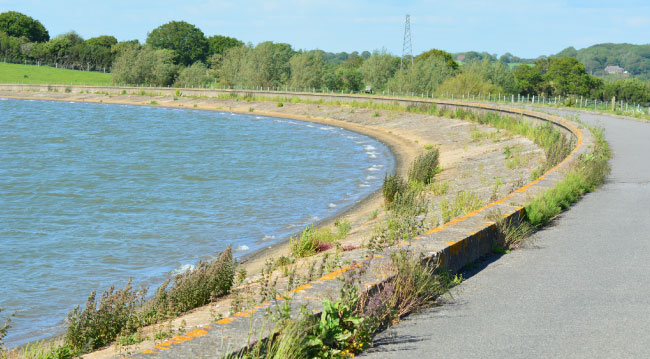Outdoors and wildlife writer Neil Harwood visits Arlington Reservoir in East Sussex, England and discovers the beauty of springtime in the English countryside…
[mc4wp_form]
Springtime In Sussex: A Walk Around Arlington Reservoir, East Sussex
Mid May. Is there a finer time in which to see East Sussex? Nature has awakened, stretched its various legs, leaves and wings and is now busy getting on with the essentials: eating, setting up home and of course, reproducing itself.
It is windy when I arrive at the reservoir. Very windy, in fact. White horses are trotting across the threatening, grey-green water. A brief respite as I walk through a wooded area and in the lee of some farm buildings, but back with a vengeance when I venture out onto the dam. It is, at times, difficult to stand upright. It feel as if I am being pushed by an unremitting bully towards something unpleasant and humiliating.
It is uncomfortable walking in high winds. Clothes flap around, hoods are blown up and down, strings from various items of clothing whip around and sting one’s cheeks and threaten one’s eyes. You put your hands into your pockets, but then something else breaks free. You remove your hands from your pockets. The contents of your pockets are immediately scattered to the four winds.
The sheer beauty of the day soon puts these hardships to the back of my mind. But the wind’s strength does give rise to many questions. How can the pied wagtail fly directly into the wind (wind that is threatening to push a fully-grown man onto his face)? How can the swallows and martins, fresh from Africa, find the strength to skim inches from the surface of the foaming water? How do the gusts not knock the swarming jackdaws from the air?
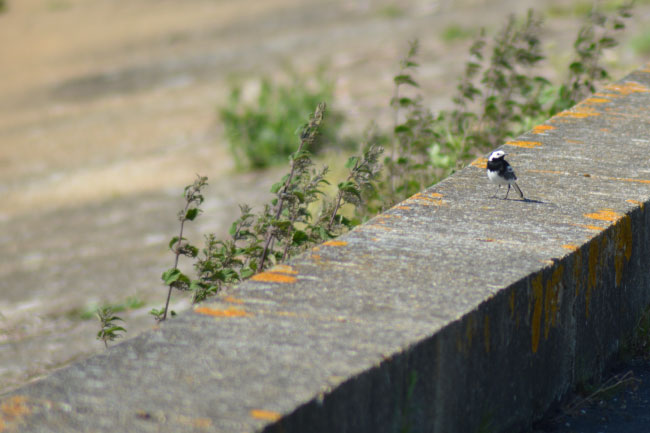
Nature Is Tough
It’s on days like this that one realises that nature is tough. The pied wagtail is tough, the swallows superhuman. And man, cosseted; secure in his waterproofs and walking boots; able to get in his car and drive home if it all gets too much.
Over the dam wall. A giant concrete curve that is neither ugly nor beautiful. It’s just there. And will be, I suppose, for the next thousand years. Yet in various cracks and fissures, plants grow. Perhaps the structure isn’t quite as eternal as it appears.
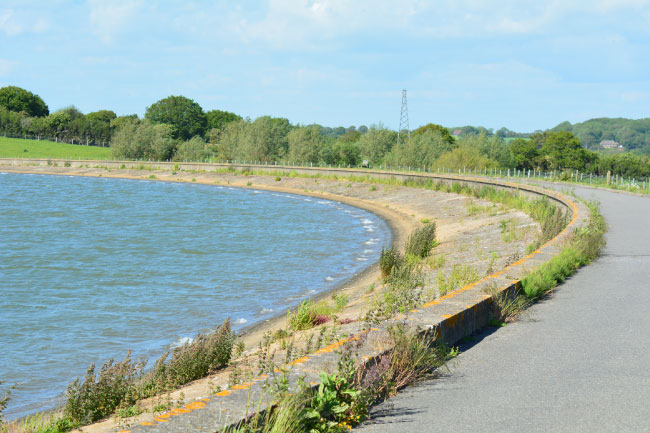
I pass the control tower, a small brick and concrete structure that rises out of the water. It is linked to the dam wall by a short bridge. The wind whistles eerily through its rusty railings. A wagtail leads the way along the dam wall. It stops a few yards in front, waits for me to catch up, then flies on.
At the water’s edge, a fisherman stares forlornly at the tangled pile of fluorescent line lying at his feet. I superciliously think he must be a beginner to get into that state. I see him later, returning to the fishing hut with a plastic bag full of trout. A beginner with his full quota of luck, then.
The South Downs
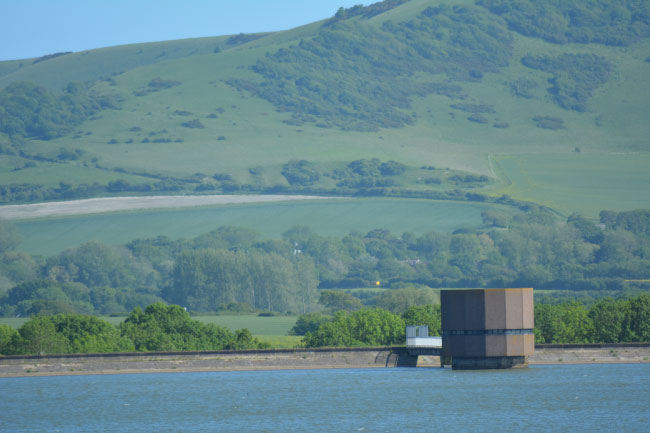
I leave the dam wall and head towards the small village of Arlington. I walk through a field full of cows. Outwardly I’m confident, but inside I’m trembling at the thought of how quickly a herd of angry cows could despatch a passing birdwatcher.
The field is exposed and the grass, though lush green, is beaten down by the constant wind. A ridge of trees sways before me, and in the middle distance, the spire of Arlington church stands tall. Forming a fixed backdrop to the shimmying foreground are the chalk hills of the South Downs. Filling the entire southern horizon, these gentle, rolling hills are subconsciously entwined into every facet of Sussex life.
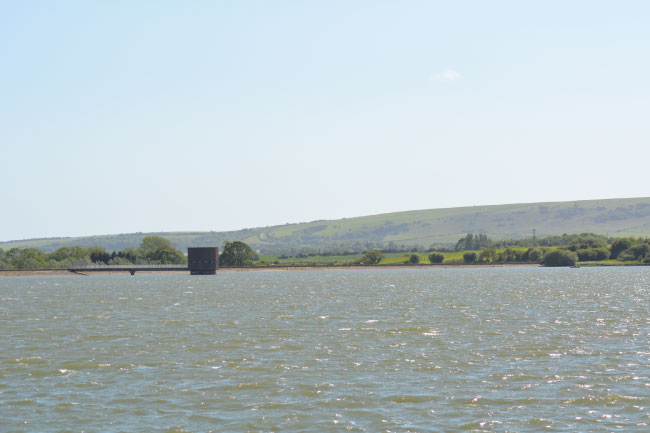
A Small Gift From God
I make it past the cows, and am rewarded with a sight to treasure: a kingfisher. This is not the usual brief encounter: a flash of blue that barely registers on the retinas. This bird is labouring into the wind, its small wings flapping furiously, and I can follow its slow progress over the field. I haven’t seen a kingfisher for over a year. I often walk near water, and they’re not particularly rare. They just seem to be a bird that appears when I am looking the other way.
On this day, in which the power and beauty of nature is already magnified, the kingfisher feels like an undeserved gift. I feel genuine elation. I continue to watch it through my binoculars as it disappears over the wall, then resume my walk with a spring in my step. These small gifts from God are to be treasured.
Arlington Village
Although a pint of Harveys at the Yew Tree Inn in Arlington is tempting, I continue onwards. Surrounded by fields and woodland, Arlington is a snug hamlet nestled at the foot of the South Downs. I think how pleasant it must be to live in such a place, and hazard a guess as to the price of a house here. Even that sobering thought doesn’t dampen my mood.
I leave the road to follow a rather strange, unnecessary footpath. The kind of footpath along which one is half expecting to trip over a body. A sad roadside place, strewn with plastic bottles, bags, batteries and other detritus. But I see robins and chaffinches, and they don’t seem to mind. Not outwardly, anyway.
I see an owl box. I recently learned that seventy-five percent of British barn owls live in man-made accommodation. Not barns and buildings: I mean boxes specifically made to house barn owls. It’s both a happy and a sad thought: happy in that the barn owls are there; sad that their natural habitat is in such short supply that they have become dependent on man.
I also notice what must be a man-made osprey nest. I suppose someone had seen the Kevin Costner film ‘Field Of Dreams’, with its mantra ‘build it, and they will come’. Sadly, but unsurprisingly, neither barn owl nor osprey deign to show themselves this afternoon. A barn owl would be a distinct possibility later in the day: the scrubby grassland and scruffy hedgerows had a definite ‘barn owlsy’ look. Another time, then.
I wend my way back to the car. I pass the aforementioned fisherman grasping his prize. Fly fishing isn’t much fun in strong winds: he’s earned his supper.
One and a half hour’s walk, just over one thousand words, and I could have written more. But there’s a word, ‘ineffable’, which perfectly sums up the beauty of East Sussex in spring. I’m sure you know what it means, but, if by any chance you don’t, I suggest you look it up. It comes in handy for days like this.
Neil Harwood

